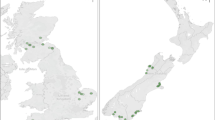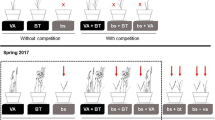Abstract
Anthemiscotula was introduced to Denmark 500 years ago, and its distribution is presently limited and in decline. A manipulative field experiment was performed to investigate the effects of native plant competitors and native invertebrate herbivores on its performance. Generally, both herbivory and competition treatments had great impact, and when both factors were operating, the effects were additive for all variables except plant height. Although A. cotula showed plasticity in growth, resource allocation and flowering timing, it was unable to adjust to competition and compensate for losses due to herbivory sufficiently to ensure and restore its achene production. This vulnerability, combined with improved cereal cleaning techniques and thus fewer reintroductions of A. cotula seeds, may be the cause of its current decline. A. cotula responded to herbivory by prolonging its flowering period, a “bet-hedging” strategy. In Denmark this strategy is unreliable since risks of sub-optimal conditions are much greater in August–October.
Similar content being viewed by others
Author information
Authors and Affiliations
Additional information
Received: 12 December 1997 / Accepted: 14 October 1998
Rights and permissions
About this article
Cite this article
Erneberg, M. Effects of herbivory and competition on an introduced plant in decline. Oecologia 118, 203–209 (1999). https://doi.org/10.1007/s004420050719
Issue Date:
DOI: https://doi.org/10.1007/s004420050719




